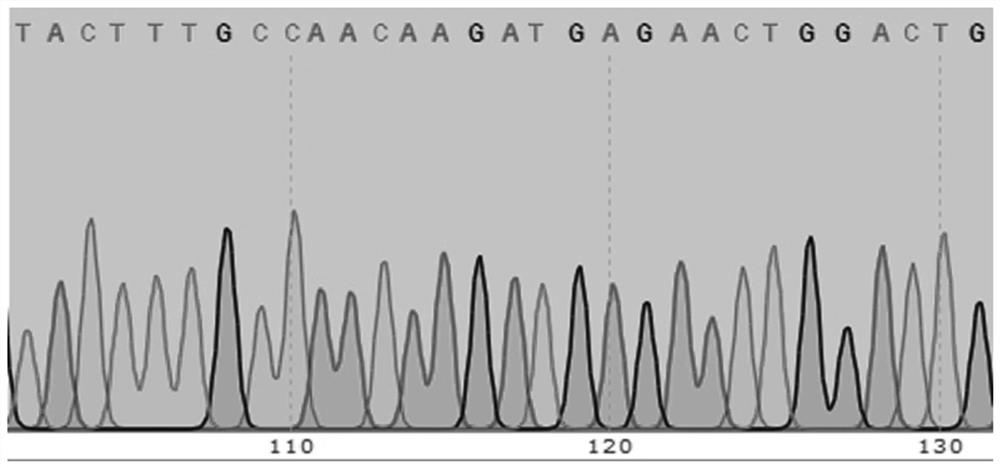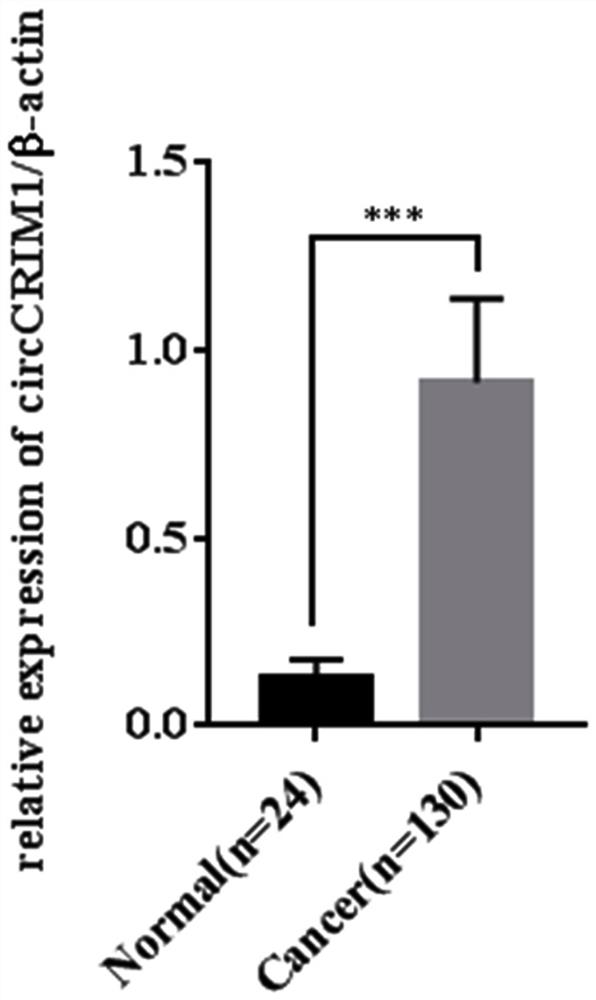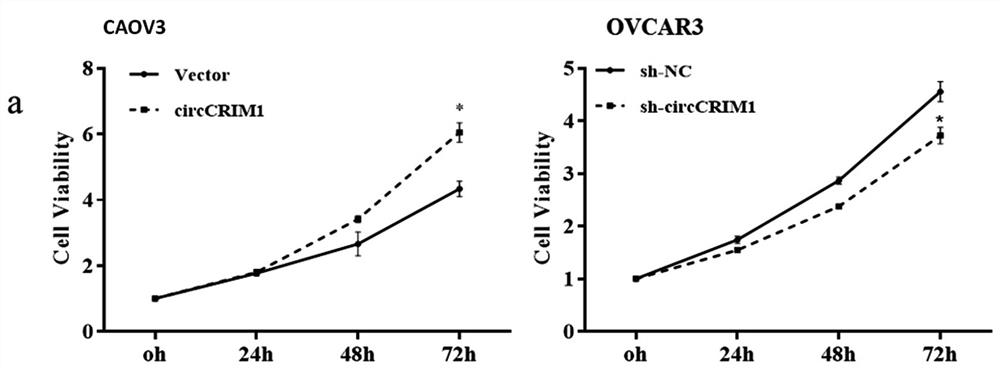Circ-CRIM1 serving as ovarian cancer diagnosis marker and application thereof
A technology of CRIM1 and circ-crim1, which is applied in the field of molecular biology and tumor marker medicine, can solve the problems of lack of Circ-CRIM1 and achieve the effect of inhibiting growth
- Summary
- Abstract
- Description
- Claims
- Application Information
AI Technical Summary
Problems solved by technology
Method used
Image
Examples
Embodiment 1
[0025] Example 1 Identification of circ-CRIM1 and its detection in ovarian cancer tissues and cells.
[0026] Identification and detection of corresponding circular RNAs in human ovarian cancer cells. Total RNA was extracted from ovarian cancer tissues using TRIzol reagent (Japan, Shiga, Takara). First, add an appropriate amount of chloroform to TRIzol. After centrifugation, add the upper aqueous phase to a new centrifuge tube and add the same volume of isopropanol to precipitate the RNA. After centrifugation again, discard the supernatant, and wash the RNA pellet with 75% ethanol. The precipitate was then dried and dissolved in diethylpyrocarbonate (DEPC)-treated water. The absorbance (OD) at 260 nm was then measured using a UV spectrophotometer (Unico, Shanghai, China) to calculate the RNA concentration. Then, 2 μg of RNA was reverse transcribed into complementary DNA (cDNA) using avian myeloblastosis virus transcriptase and random primers (Japan, Shiga, Takara). Next, ...
Embodiment 2
[0033] Example 2 The level of circ-CRIM1 directly affects the tumor growth and metastasis of ovarian cancer.
[0034] 1. Construction of stable cell lines.
[0035]The overexpression plasmid (pHBLV-circ-CRIM1) and circ-CRIM1 short hairpin RNA (shRNA) plasmid were constructed by Shanghai Hanbio, and Lipofectamine 3000 (Invitrogen, Carlsbad, USA) was used for transfection. Doses of all reagents were based on manufacturer's instructions. Circ-CRIM1 expression was upregulated using circ-CRIM1 plasmid and circ-CRIM1 was silenced in OC cell lines using circ-CRIM1 short hairpin RNA (shRNA) plasmid. Puromycin (2 μg / ml) was used to select stable clonal cell lines. The sequences of circ-CRIM1 and circ-CRIM1 shRNA are shown in the sequence diagram. Subculture was performed when the cell plating rate reached 90%. At the same time, 5 μg / mL puromycin was added to the medium to select stably transfected cells. The cell density should not exceed 50% during screening. Screen for at least 2...
PUM
 Login to View More
Login to View More Abstract
Description
Claims
Application Information
 Login to View More
Login to View More - R&D
- Intellectual Property
- Life Sciences
- Materials
- Tech Scout
- Unparalleled Data Quality
- Higher Quality Content
- 60% Fewer Hallucinations
Browse by: Latest US Patents, China's latest patents, Technical Efficacy Thesaurus, Application Domain, Technology Topic, Popular Technical Reports.
© 2025 PatSnap. All rights reserved.Legal|Privacy policy|Modern Slavery Act Transparency Statement|Sitemap|About US| Contact US: help@patsnap.com



